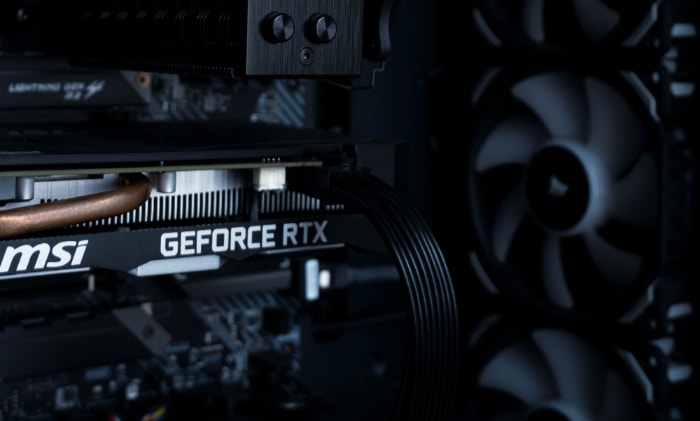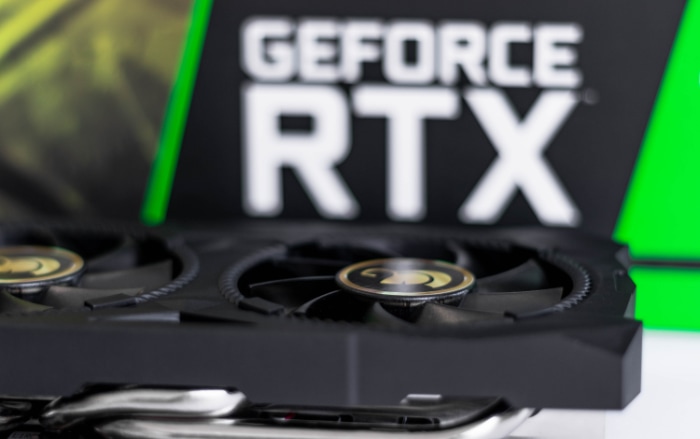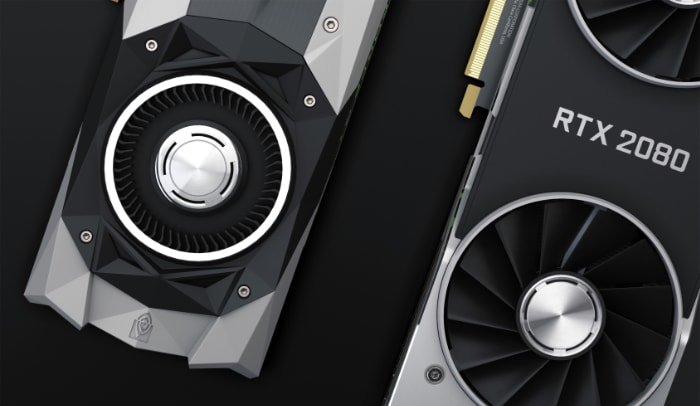Is Ray Tracing Worth It? Weighing the Pros and Cons

In recent years, if there’s been one topic that’s been stirring up debates in the realm of computer graphics and gaming, it’s the advent of ray tracing technology.
The promise of unprecedented realism in digital visual experiences is tantalizing, but it begs the question: Is ray tracing truly worth it?
Is the enhanced visual experience worth the hefty hardware requirements and potential dip in performance that come with it? Does it justify the investment in high-end graphics cards and gaming rigs? How much of a difference does it really make in the gaming experience?
What is Ray Tracing?
Ray tracing is a rendering technique used to generate an image by tracing the path of light as pixels in an image plane and simulating the interactions of the light particles with the digital objects present in the scene.
This technology is rooted in the science of optics and aims to mimic the physical behavior of light – including reflection, refraction, and scattering – to produce photorealistic graphics.
The goal is to enhance the visual detail and create a more immersive, realistic gaming or viewing experience.
A Brief History of Ray Tracing
The concept of ray tracing originated in the field of physics, particularly in the study of light and optics. However, its application in computer graphics began in the late 1960s and early 1970s, with the seminal work of engineers and computer scientists such as Arthur Appel, who used ray casting, a simpler precursor to ray tracing, for generating images.
However, ray tracing as we know it today took shape in the 1980s when Turner Whitted introduced recursive ray tracing to generate more realistic and complex images. This method took into account the multiple paths light can take after hitting an object, enabling the simulation of more detailed effects like reflections and refractions.
Despite these developments, ray tracing remained largely confined to non-real-time applications like CGI in movies, due to the heavy computational requirements. This changed in the late 2010s, with the advent of advanced GPUs capable of handling ray tracing in real-time environments, such as video games.
The Evolution of Ray Tracing in Computing
The introduction of GPUs capable of ray tracing brought about a paradigm shift in the world of computer graphics. These GPUs, armed with dedicated ray tracing cores, allowed this technology to be used in real-time scenarios without bringing systems to their knees.
This evolution was further boosted by the development of ray tracing APIs like Microsoft’s DirectX Raytracing (DXR) and Vulkan’s ray tracing extensions.
Coupled with the advancements in hardware, these APIs have allowed for the integration of ray tracing into popular game engines like Unity and Unreal Engine, thus opening up the world of photorealistic, real-time graphics to mainstream video gaming.
Pros and Cons of Ray Tracing
While ray tracing promises to revolutionize the world of digital graphics, it’s crucial to understand the trade-offs that come with this technology. Like any other technological innovation, ray tracing comes with its set of benefits and drawbacks. Below, we dissect the pros and cons of this technology to provide a balanced perspective.
The Advantages of Ray Tracing
Photorealistic Graphics
The primary advantage of ray tracing is the unparalleled level of realism it brings to digital graphics.
By accurately simulating the behavior of light, ray tracing can create intricate effects, like reflections, shadows, and diffractions, in a manner not possible with traditional rasterization techniques. This results in stunningly lifelike and immersive visual experiences in games and other digital media.
Enhanced Lighting and Shadow Effects
One of the most impressive features of ray tracing is its ability to render dynamic lighting and detailed shadows.
Ray tracing can generate soft shadows, hard shadows, and complex light refractions and reflections that add depth and realism to the scene. Moreover, it can handle multiple light sources and interactions with a range of materials, making the digital environment more dynamic and engaging.
The Disadvantages of Ray Tracing
High Computational Demands
One of the main criticisms of ray tracing lies in its high computational demands. Since ray tracing calculates the path of millions, sometimes billions, of individual light rays per second, it requires powerful hardware resources.
In many instances, enabling ray tracing can result in a noticeable decrease in performance or frame rates, particularly in real-time environments like video games.
Requirement for High-End Hardware
As a corollary to its computational intensity, ray tracing often requires high-end, expensive hardware, particularly graphics cards with ray tracing capabilities.
As of the time of writing, only a handful of GPUs – mostly in the upper price range – offer these capabilities, making ray tracing a costly feature for many users.
Incomplete Implementation in Games
Another drawback is that, currently, not all games support ray tracing. While the list is continuously growing, many games, particularly older or less resource-intensive ones, have not incorporated ray tracing.
Additionally, even in games that support ray tracing, the implementation can vary, with some games only featuring certain aspects of ray tracing.
Ray Tracing in Gaming

As the world of gaming continually pushes for better and more immersive experiences, ray tracing has emerged as a significant technological player. Let’s dive into how ray tracing has been implemented in video games and what this means for the future of gaming.
Ray Tracing: Enhancing Game Realism
The fundamental advantage of ray tracing in gaming is the leap in visual quality. As it simulates light more accurately than traditional rendering methods, ray tracing brings the promise of more immersive and realistic game worlds.
With ray tracing, in-game lighting behaves like real-world light, bouncing off surfaces, casting accurate shadows, and creating realistic reflections.
Popular Games Incorporating Ray Tracing
Several high-profile games have embraced ray tracing, showcasing the potential of the technology.
For instance, “Cyberpunk 2077” uses ray tracing for reflections and diffused illumination, adding a level of depth and realism to the sprawling urban landscapes of Night City. Similarly, “Minecraft” with its RTX update, transforms the traditionally blocky game into a dazzling visual experience with striking reflections and radiant lighting.
Moreover, games like “Control” and “Battlefield V” have demonstrated how ray tracing can transform environments, whether it’s the reflections in a polished floor or the shadows in a war-torn landscape. These examples illustrate how ray tracing can elevate the gaming experience to new levels of immersion.
Performance Impact and Player Experience
However, as exciting as these visual enhancements are, they come at a cost. Ray tracing, given its computational intensity, can significantly impact game performance.
Players with high-end systems may be able to enjoy ray-traced games with relatively minor performance hiccups, but those with mid-range or lower-end systems may experience substantial drops in frame rates. It’s a balancing act between visual quality and performance stability that players need to consider.
Ray Tracing Support and Game Developers
On the development side, game studios are gradually adopting ray tracing, thanks in part to support from graphics API like DirectX Raytracing and Vulkan Ray Tracing, and game engines like Unreal Engine and Unity.
This adoption, however, is a gradual process, and many older or less graphically-intensive games do not yet support the technology.
Hardware Requirements for Ray Tracing
As we dig deeper into the world of ray tracing, it’s crucial to understand the hardware requirements that this advanced technology demands. Ray tracing is computationally heavy and, therefore, requires a robust and capable system to operate effectively.
The Crucial Role of GPUs
A Graphics Processing Unit (GPU) plays an essential role in rendering images on your screen, and with ray tracing, its role becomes even more critical. Ray tracing requires GPUs that are capable of handling the significant workload of simulating light paths in real time.
When it comes to ray tracing, not all GPUs are created equal. Dedicated ray tracing cores, such as those found in NVIDIA’s RTX series and AMD’s Radeon RX 6000 series, can significantly improve the performance of ray traced games and applications.
RAM and CPU Considerations
While the GPU takes on the bulk of the ray tracing load, other components of your system also play a role. A powerful CPU can help manage the increased demands of a ray traced game, particularly in complex scenes with numerous objects.
Similarly, having enough RAM is crucial to ensure smooth performance. While the exact requirement will depend on the specific game and its implementation of ray tracing, having at least 16GB of RAM is generally recommended for gaming with ray tracing enabled.
Cost Considerations for Ray Tracing Hardware
Another aspect to consider is the cost. As of now, the hardware capable of efficiently handling ray tracing, particularly GPUs, comes with a hefty price tag. This can put it out of reach for many casual gamers, or those on a tight budget.
However, the situation is slowly changing. As the technology matures, more cost-effective solutions capable of handling ray tracing are entering the market.
Moreover, new technologies, like DLSS (Deep Learning Super Sampling) from NVIDIA, are helping to offset the performance impact of ray tracing, allowing it to run more smoothly on less powerful systems.
Is Ray Tracing Worth It?

After dissecting what ray tracing is, its benefits and drawbacks, and its requirements, we arrive at the central question: Is ray tracing worth it? To address this question, let’s weigh the trade-offs and analyze the various factors at play.
The Visual Payoff of Ray Tracing
The visual enhancement that ray tracing brings to the table is unparalleled. The way it transforms lighting, shadows, and reflections can dramatically increase the realism and immersion of a game or a digital scene.
For those who highly value graphic fidelity and want the most immersive experiences possible, the visual payoff can certainly justify the investment in ray tracing.
Performance Trade-Offs
However, the performance impact that comes with ray tracing cannot be ignored. If smooth performance and high frame rates are a priority for you, especially in fast-paced games, the potential drop in performance caused by ray tracing might be a deal-breaker. It’s essential to strike a balance that works for you, based on your preferences and the games you play.
Hardware Investment
The hardware investment required for ray tracing is another critical factor. As of now, you need a high-end GPU with dedicated ray tracing cores, which can be quite pricey.
If budget constraints are a concern, this might tip the scales against ray tracing. However, it’s worth noting that more affordable ray tracing-capable hardware is expected to become available in the future.
Your Gaming Preferences
The decision also heavily depends on the types of games you play. If you mainly play games that don’t support ray tracing or ones where high frame rates are more critical than visual fidelity (like competitive esports titles), ray tracing might not be worth the investment.
On the other hand, if you play a lot of single-player games that aim to deliver visually stunning and immersive experiences, ray tracing can greatly enhance your gaming experience.
Conclusion
Ray tracing, with its ability to simulate light behavior and generate photorealistic graphics, has undeniably made a significant impact on the realm of digital graphics and gaming. Its promise of immersive and lifelike visual experiences has stirred up excitement and interest among gamers and tech enthusiasts alike.
However, as we’ve explored in this blog, the adoption of ray tracing involves considering a balance of factors. The spectacular visual enhancements come with trade-offs, including high computational demands, the need for high-end hardware, and possible performance impacts.
Additionally, the types of games you enjoy and the importance you place on visual fidelity versus performance are crucial considerations.
The question of whether ray tracing is worth it ultimately boils down to individual preferences, priorities, and circumstances. For some, the exceptional realism and immersive gaming experiences provided by ray tracing might be worth the high system requirements and potential performance hit.
For others, especially those with budget constraints or those who prioritize high frame rates, the investment might not yet seem justified.
As we look to the future, the landscape of ray tracing continues to evolve. With more games incorporating ray tracing, more affordable ray tracing-capable hardware entering the market, and advancements in technology that help offset performance impacts, ray tracing may become more accessible and appealing to a broader audience.
In conclusion, ray tracing is an exciting advancement in the realm of digital graphics, one that holds the potential to significantly enhance visual experiences.
Whether it’s “worth it” is a decision each user must make based on their individual needs, preferences, and resources. Regardless of the choice one makes today, the future of ray tracing certainly looks bright, promising ever more realistic and immersive digital experiences.


